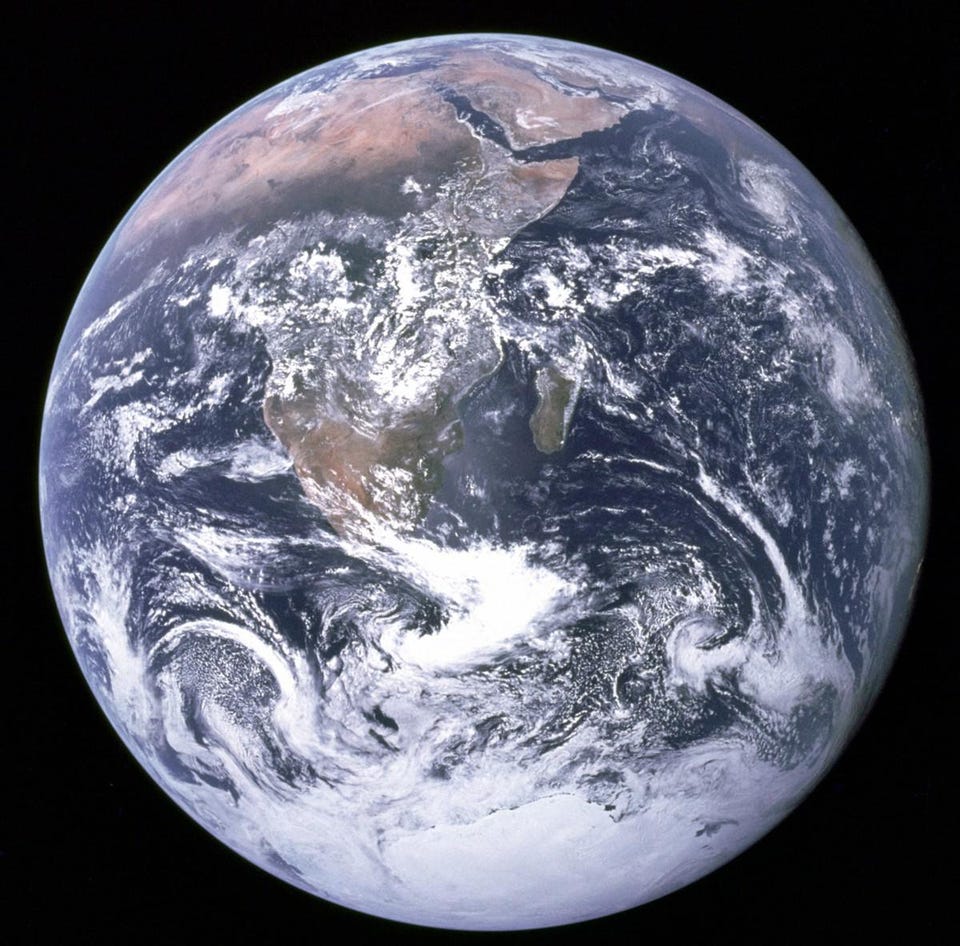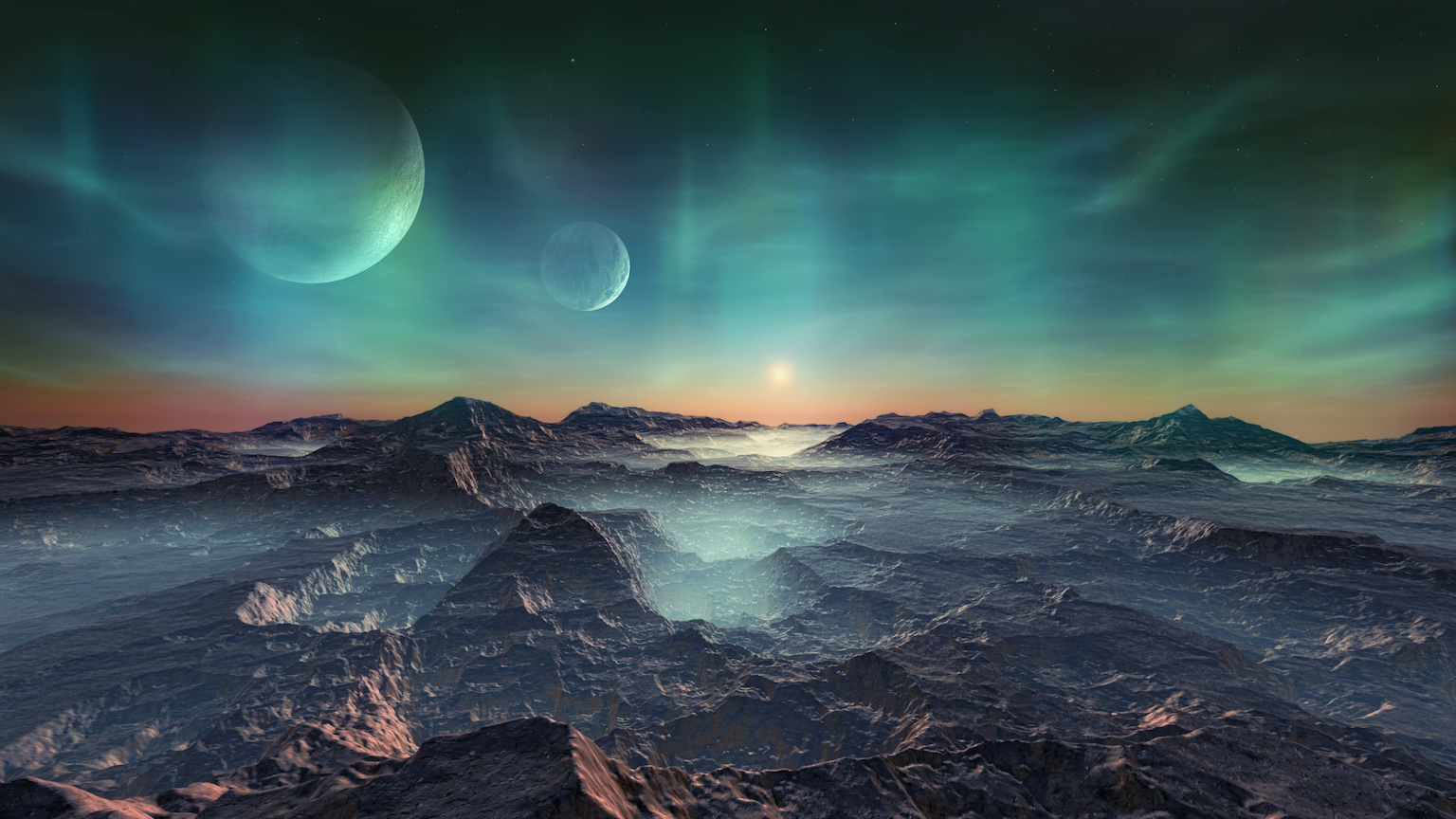Ask Ethan: Could Earth be the only planet with intelligent life?

- We live in a vast observable Universe, with sextillions of stars and even larger numbers of planets, with more unobservable Universe and potentially even a multiverse beyond what we can see.
- While the ingredients for life and living planets are seemingly everywhere, however, we have yet to detect a single sign of life beyond Earth — even the simplest forms of life — on any world at all.
- Is it possible, or even likely, that despite all of the chances out there for intelligent life, planet Earth is home to the only instance of it in all of reality? Here's what the science has to say about it today.
The Universe, as we understand it today, is a vast expanse of space littered with stars, galaxies, and very likely planets, for as far as our instruments can probe. Beyond that, there’s likely a much greater amount of “Universe” out there that’s unobservable to us, and an inflationary multiverse in which our entire Universe is embedded. Yet, even though our scientific efforts have revealed an enormous number of details about the Universe we inhabit (and perhaps even beyond), we have yet to find another inhabited world out there with even simple, microbial life, much less life that’s complex and differentiated, or even intelligent and technologically advanced. The question of just how “alone” we are in the Universe remains unanswered.
And it’s this question — perhaps the biggest existential question of all — that Ronald Rainge wants to know the answer to, asking:
“With a universe large beyond comprehension, and theories of multiverses, could this really be the only planet with high level intelligent life?”
Although there are an enormous variety of well-thought-out possible answers to this question, we have an absolute absence of data to know for sure. The current answer is that a Universe with ubiquitous intelligent life and a Universe where “Earthlings” are the only ones around are both within the realm of possibility, and it will take a tremendous increase in our current knowledge to know the answer for certain. Here’s where we stand today.
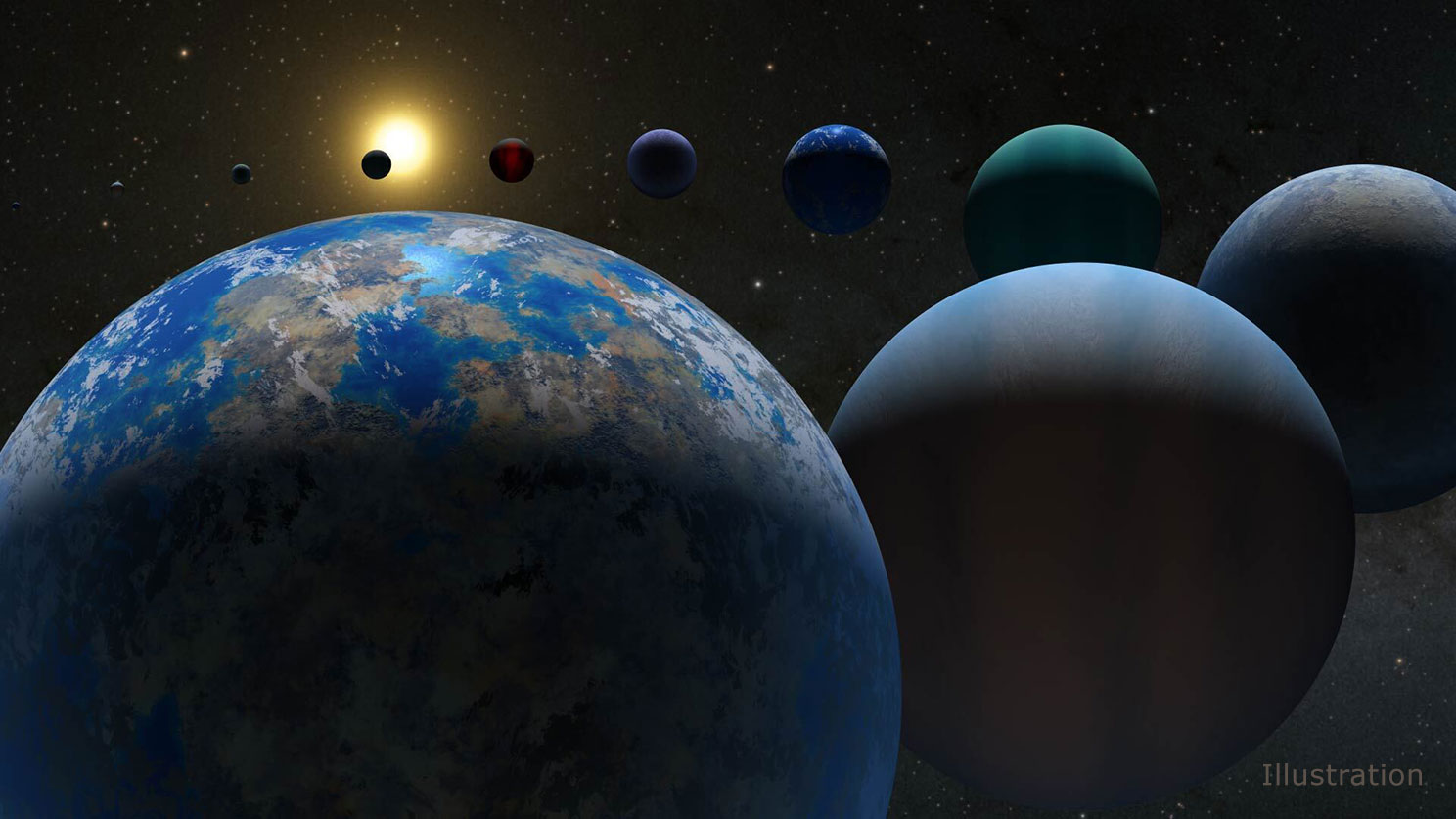
Let’s begin by dividing our knowledge base into three separate sections:
- what is known to be true, today, in 2023,
- what is not yet known but is assumed to be true, based on our current knowledge,
- and what remains unknown, even today, even with the best knowledge at our disposal.
As far as the true things go, this represents the full suite of tremendous accomplishments, both from the experimental/observational side that’s rooted in concrete evidence, as well as from the theoretical side that are simply extrapolations from what’s successfully explained by our best theories to what the necessary consequences of those theories are.
We know how many stars there are, including what percentage of them are like the Sun, what percentage have enough heavy elements to be consistent with having the potential for rocky planets and life on those planets around them, how many of those systems are present within the observable Universe at present, and how many of those systems are actually observable by us, today, if we had arbitrarily advanced technology to work with. It’s absolutely remarkable that just about 30 years ago, we didn’t know the answers to any of these questions, and yet today, we’ve learned the definitive answers to them all.

Within our own Milky Way, there are somewhere around 400 billion stars, but the Milky Way itself is a particularly large, evolved, late-time galaxy compared to the average galaxy in the Universe. We can map out what’s called the metallicity of the stars in our galaxy — the fraction of heavy elements, elements heavier than hydrogen or helium, that are present within the star — and see what the relationship is between a star’s metallicity and its chances of having planets around it. And we can also sort stars by their mass and spectral type, and see what fraction of those stars have possibly Earth-like planets around them, where “Earth-like” at this point only means:
- rocky, like Earth,
- about the same mass and radius as Earth,
- at about the same distance from its parent star to receive comparable amounts of power as Earth receives from the Sun,
- and where that’s truly all we can measure for now.
And finally, we can take what we know about star-formation in the Universe and the full suite of observed galaxies — as well as the theoretical expectations for galaxies that are too faint, too low-in-mass, too close to larger galaxies, and too distant for us to directly resolve, for us to come up with an estimate for how many potentially inhabitable worlds there are contained within the observable Universe. That information, all of it, falls into that first category of “what is known” to be true, today, in late 2023.

Here are some numbers for you, if you’re interested.
- All told, within our visible Universe, there are approximately an estimated 2.2 sextillion, or 2.2 × 1021, stars that exist: of all types, masses, and that were created at all different times.
- Of those stars, only about 4% of them, or 8 × 1019, are observable to someone here on Earth, as most of the stars that exist were created at late times in galaxies that we can only see, today, back from when they were very young.
- Of the stars that exist, about 3-5% of them are the same class (G-type) as our Sun. About 15-20% of stars are cooler and lower in mass (K-type), and about 75-80% of all stars are the coolest, least massive “red dwarf” (M-type) class. Only about ~2% of stars are bright, blue, and very short-lived.
- And in order for stars to have the possibility of rocky planets, they have to have enough heavy elements within them. The average cutoff appears to be ~25% of the amount of heavy elements in our Sun; above that accounts for ~98% of known planets, while below that accounts for only ~2% of all known planets.
Even with these restrictions, this leaves us with a tremendous number of planets that are at least “candidate planets” for possessing some type of life in the Universe: perhaps ~1019 of them (or even more, by some estimates) that are potentially observable to us here on Earth, assuming we achieve infinitely powerful levels of technology but are still bound by the laws of physics.
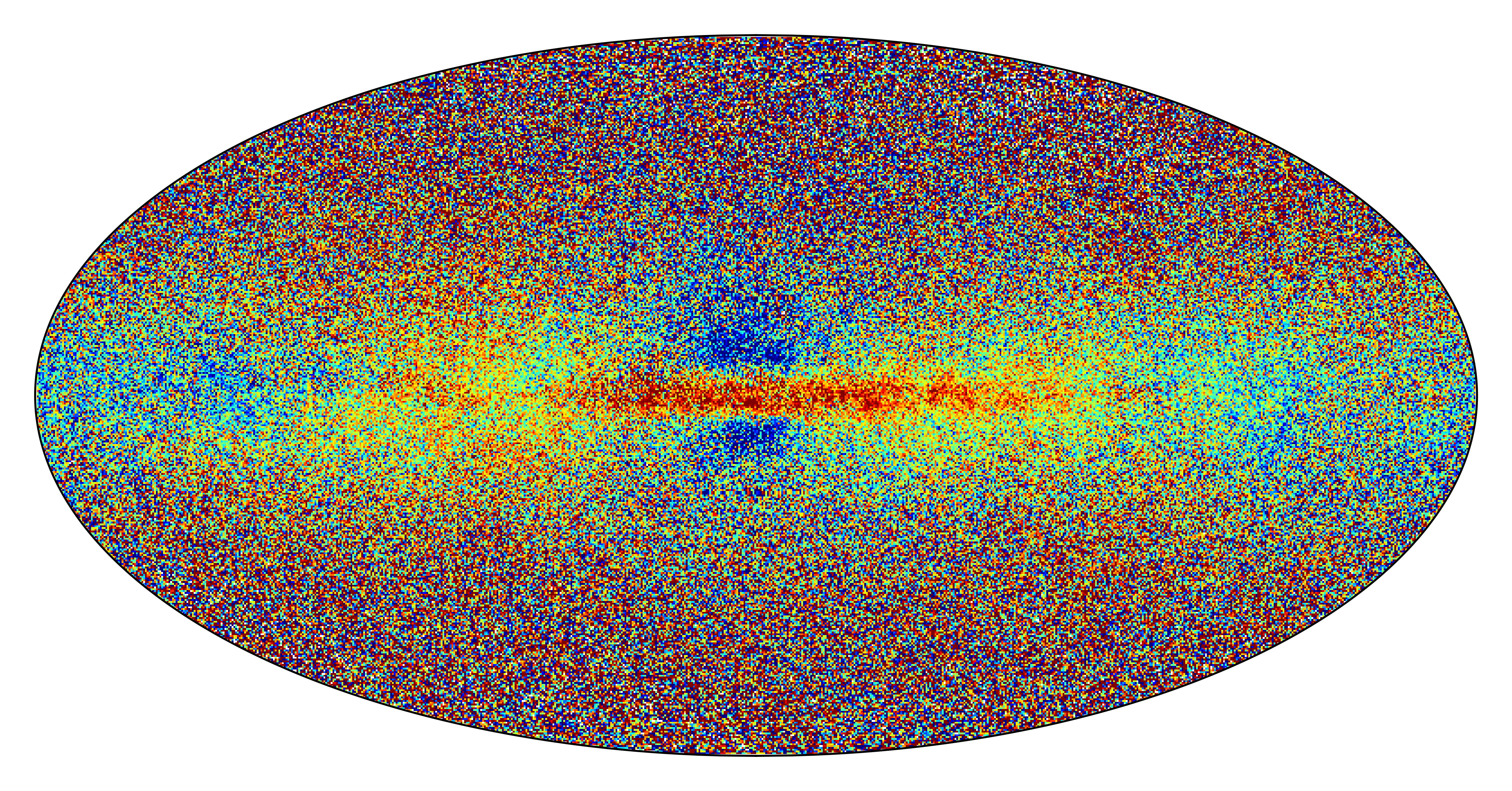
Now, we have to go to the assumptions to proceed further, as we only have one example of a known world that possesses known life on it in any form: Earth. Anything beyond that demands that we venture somewhere into the realm of the unknown, and that mandates being up front and honest about the assumptions that we make.
- We assume that life arose through some natural process from non-life, and that any planet with the right chemical precursor ingredients and environmental conditions — whether similar to Earth or different in a number of important ways — can be considered a candidate planet for life.
- We assume that the laws of physics that we experience and perceive here, on Earth and in our own Solar System, are identical to the basic laws of physics that govern existence everywhere else in the Universe.
- And we assume that the definition of life is something that can somehow extract energy from its environment, can use that source of energy to carry out some sort of life process (i.e., has a metabolism), and can either make copies of itself or have some sort of offspring that is related to itself (i.e., can reproduce in some fashion).
Although these are common assumptions among biologists, astrobiologists, and most scientists who study the origin of life, there are often people who make different assumptions about one or more of these, and so it’s important to state the “naturalistic” position explicitly.

Additionally, there are cosmological assumptions at play as well. We assume that the part of the Universe that’s unobservable to us not only obeys the same underlying rules but possesses similar or even identical conditions to the portion of our Universe we’re familiar with. We assume that the process that set up and preceded the hot Big Bang for us — cosmic inflation — not only created a hot Big Bang over a volume of space far larger and grander than what encompasses our observable Universe (i.e., created a large unobservable Universe), but that, as predicted by inflation and as constrained by our measurements of the part of the Universe we can observe:
- there is an unobservable Universe that goes on for at least 400 times the radius (and 64 million times the volume) of our presently observable Universe,
- that it’s filled with the same sort of “stuff” that comes to exist in our Universe, including the ingredients for galaxies, stars, planets, and life,
- and that there’s an inflationary multiverse separating different “pockets” of space, or different observable Universes, from one another.
This should create, overall, an enormous set of disconnected “Universes” that are not only beyond our own observable Universe, but beyond our unobservable Universe as well. However, it is only the portion of our Universe that’s within our light-cone — i.e., where we can potentially receive signals that were emitted since the Big Bang — that we consider as far as “detectable” extraterrestrial life.

And already, unfortunately, we must now leave the realm of the “known” and the “solidly assumed” to head into the realm of the speculative. Now, we are forced to ask the hard question that science has not answered. Here are some of them.
- What is the mechanism by which life has originated from non-life here on Earth?
- What are the other mechanisms by which life can arise, and how common are all of these mechanisms?
- Where life does arise, how frequently does it persist for long periods of time, versus how often does life get wiped out when it appears on a world?
- Where life arises and persists, how frequently and after how long does it become what we would call complex and differentiated: where it is multicellular, consists of specialized components, and possesses many different structures that perform a variety of different biological functions?
- And where life becomes complex and differentiated, how often does it become intelligent and/or technologically advanced, and how long do species that we’re “interested in” in that sense persist for?
Frustratingly, we have no evidence that points toward the answer to any of these questions, and these are questions that we must learn the answer to all of them before we’re ready to answer the question of, “Could we truly be alone?”
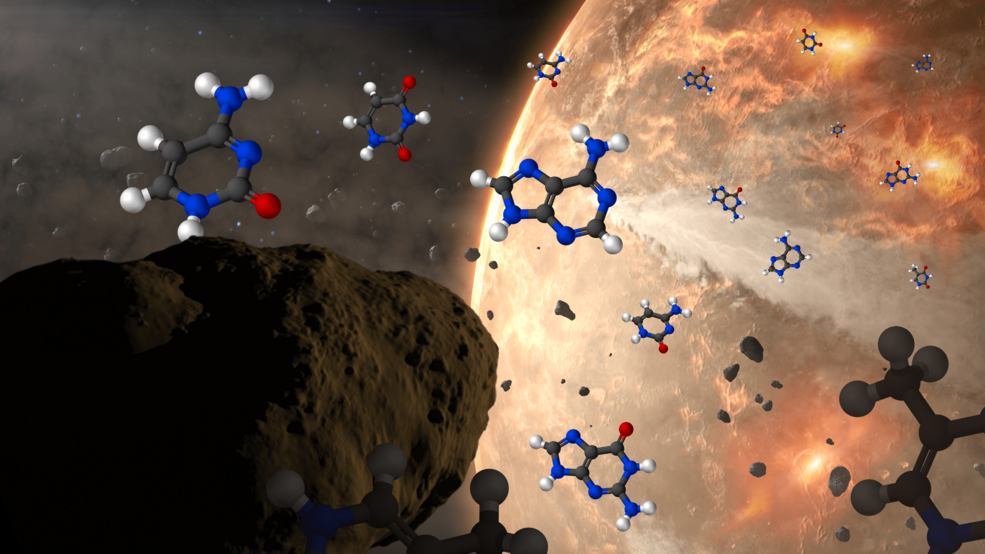
However, our ignorance has never stopped us from what we’d call making healthy speculations, and we won’t let our lack of concrete knowledge stop us here.
Right now, the leading theory of how life arose from non-life is through a process called peptide-RNA coevolution. The idea is that some sort of collection of amino acids — the building blocks of proteins — formed in an aqueous environment in the presence of an energy source naturally. We believe this is likely, considering that both large amounts of water and significant numbers and types of amino acids are found in protoplanetesimals: objects like asteroids and comets, left over from the formation of our Solar System.
Whereas there are only about 22 amino acids, all of the same “handedness” or chirality, that participate in life processes on Earth, there are more than 80 amino acids, of both “handedness” or chiralities, that are found in these icy-and-rocky bodies. When amino acids synthesize to form a peptide or protein, those new molecules can perform metabolic functions. When you add an ion to a peptide, they can behave as an enzyme. And when you couple some sort of nucleic acid to them — whether based on ribose sugars (RNA), peptides (PNA), or other “xeno” (from the Greek word for stranger) nucleic acids (XNA) — you can confer on them the ability to reproduce.

But now, unfortunately, we have to enter the realm of total speculation — what I would consider unhealthy speculation — if we want to start computing probabilities. There is, at present, no scientific basis for asserting any sort of probability or likelihood to the steps of:
- life emerging from non-life,
- life sustaining itself for billions of years or more on a planet,
- life evolving to become complex and differentiated,
- or that complex, differentiated life from becoming intelligent and potentially technologically advanced.
We have only one example for evidence where any of this has occurred: here on Earth. On Earth, life emerged from non-life early on (no later than 3.8 billion years ago), has sustained itself for all the time since it first emerged, that became complex and differentiated at least ~600-700 million years ago, and that has at least one example of intelligence in humanity today.
If each step is quite likely — say, 1-10% of all candidate planets have this occur — then there are between 1011 and 1016 worlds out there that are observable to us that, at some point, develop intelligent life on them.
On the other hand, if one or two of these steps are relatively unlikely — where, say, there’s only a 1-in-a-billion chance for it to occur — then it’s plausible that as far as intelligent life goes, we may be alone after all: at least, as far as reaching and discovering such a system is concerned.

However, while we might most be interested in intelligent, technologically advanced alien species — and yes, it’s still a scientifically worthwhile endeavor to look for them — it’s important to not restrict ourselves to searching for what we most strongly hope is out there. If we found a planet where the most intelligent life form is akin to a dolphin, a dog, an alligator, or even a spider, we would not only be overjoyed, but we’d be studying as hard as we could to figure out how to communicate with such a foreign intelligence.
Even if all we found was a world with microbial (or even simpler) life — which we fully expect should be the most common circumstance among all inhabited planets — we’d learn that Earth is not unique, and that life really is out there in the Universe. As long as we’re the only known example of life, we might truly be a tremendous winner in the cosmic lottery of biology. But if we find a second example, we’d not only have reasons to believe there are many others, but that we can then begin estimating the frequency of inhabited worlds.
I think it’s very unlikely that Earth will turn out to be the only planet with life on it at all; like most scientists, I think it’s very likely that there are thousands, millions, or even a billion+ inhabited worlds by some form of life in the Milky Way alone. But so many key questions remain unanswered.
- Did Earth get extremely lucky in that our biosphere never once completely collapsed?
- Is the 3-4 billion years that we took to go from the origin of life to complex and differentiated life typical, or were there special circumstances that enabled our planet to get there?
- And is human-like intelligence such a rarity that the odds against it are astronomical? Or are intelligences like our own relatively common: both here on Earth and on other planets?
Today, these are questions that no scientist can answer, but a great many scientists are working to uncover the evidence for, one way or another. Perhaps, when our first detection of an inhabited world beyond Earth occurs, we’ll finally begin answering these questions in the only satisfactory way we know: with data, rather than a priori reasoning alone.
Send in your Ask Ethan questions to startswithabang at gmail dot com!

